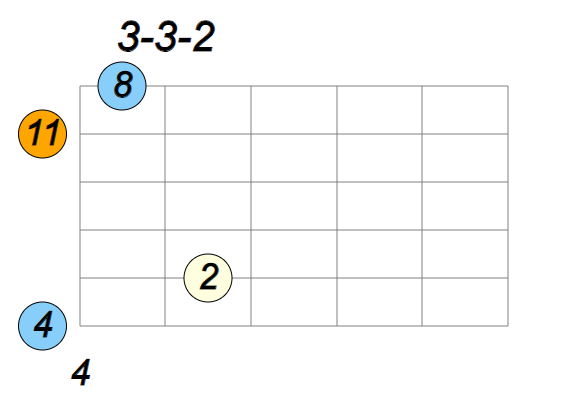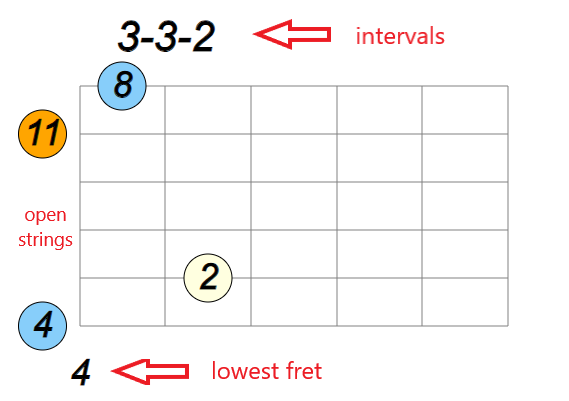“Remember when songs had chords?” - Tom Bukovac

I’ve had a weird science experiment going for a while now, inspired by Miles Okazaki’s Fundamentals of Guitar book, which was introduced to me by Adam Levy.
In Okazaki’s book, he has a section where he charts out all the 3,4,5 note chords that can be played on the guitar. Most of them are things you would be unlikely to come up with on your own and at least for me many of them are essentially unplayable as they require finger gymnastics I’m not capable of.
But I love the idea of using chords off the beaten standard major/minor/seventh path. Plus dissonance (aka tension) is awesome.
So I’ve been hacking at a chord generator in fits and starts for the last year or two. It’s inspired by Okazaki’s idea (and Jenny McLeod’s chromatic maps), but with a couple of modifications. First, it ignores anything with more than a four fret stretch. Second, right now it’s setup to produce 4-note chords with open strings. It’s in a pretty primitive state, but anyone who wants to give it a go is welcome to. To get a new chord, just refresh your browser.
It also supports drop D for Dana and DADGAD for the adventurous.
Enjoy!
How To Use It
Any way you want. I tend to go fishing for chords. When I find one I like, I sometimes try and use it in some kind of motif which may or may not turn into a piece. Other times, I make a note of it to come back to later. Someday, the app will keep track of that for me.
Fiddly Details

The numbers at the top of the fret diagram are the intervals comprising the chord - in this example 3-3-2 means minor third, minor third, second. The note circles use note numbers (starting with C=0), not names (i.e. C#). This may seem weird, but you get used to it. I find it easier. Why is a topic for another post. So in this case 3-3-2 equates to 8-11-2-4. You’ll notice the chord is “upside down” - most generated chords will be. Four note chords constructed from the bottom up that include small intervals are frequently impossible to play because of the stretches required.
The number under the fret diagram is the lowest fretted note, 4 in this example. Open strings are shown to the left of the fretboard.